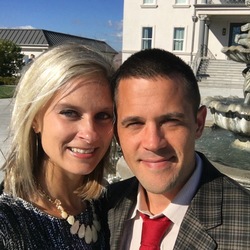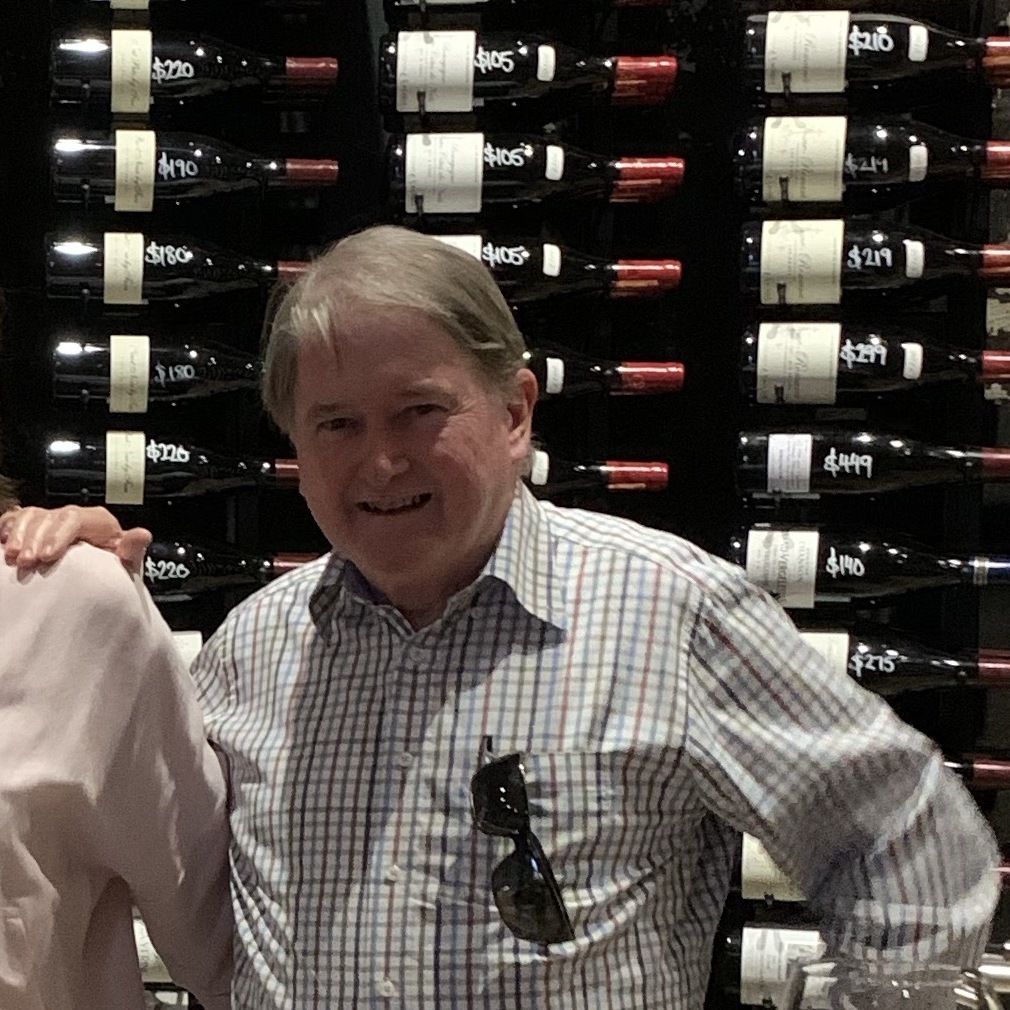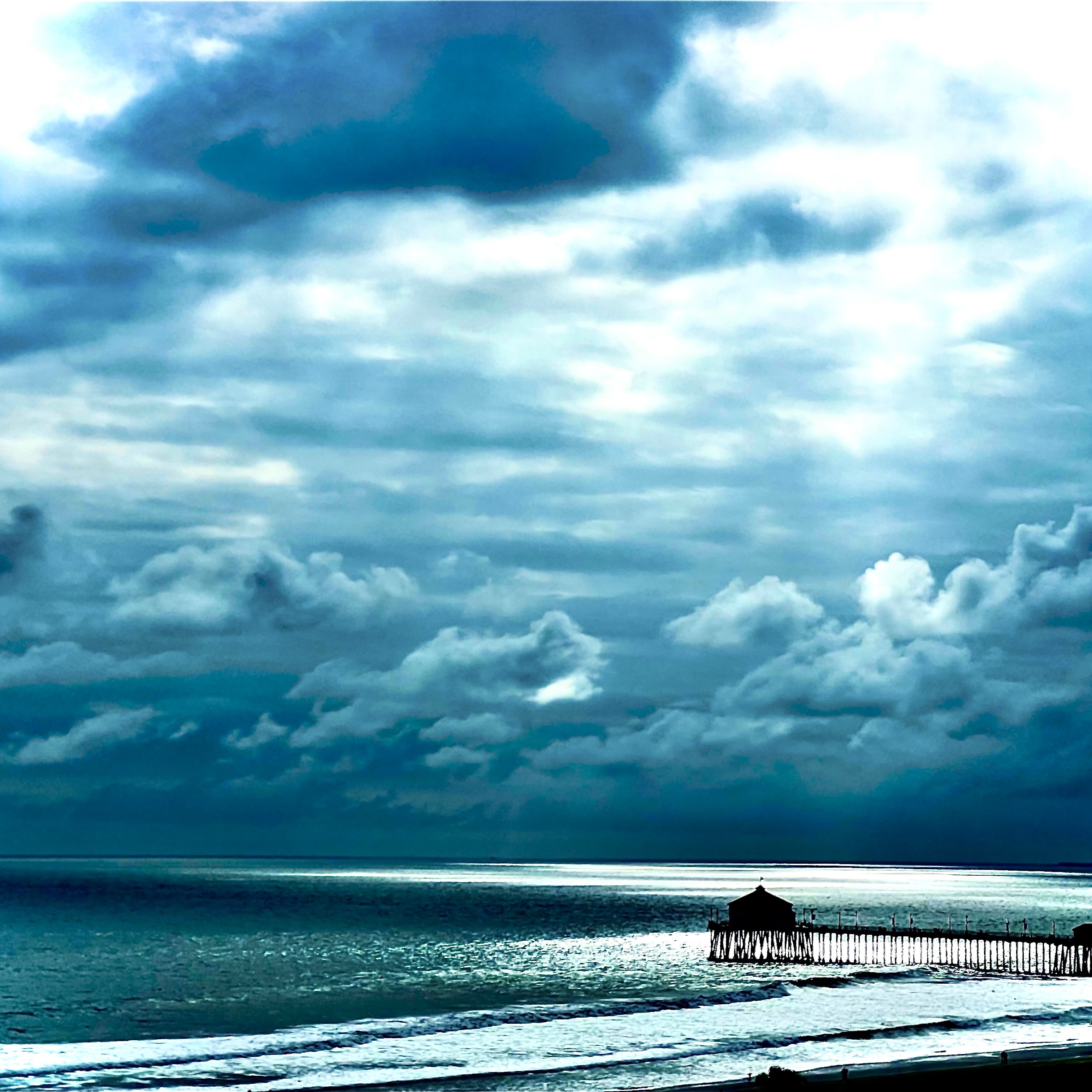Bare Bottom
Gérard Bertrand
Cote des Roses Languedoc Grenache Blend 2016
Light, not too sweet, delightfully pink and very easy to drink. Bonus: beautifully designed bottle with a rose on the bottom. — 8 years ago
Phifer Pavitt
Date Night Sauvignon Blanc 2015
It been hot on the west coast...even in places it's not normally. Today is no different and you can add humidity; which is something we almost never have here. Time to bust out the Sauvignon Blanc. This beauty is loaded with tropical madness. Plenty of crystalline sugar in the bottom of the bottle. The green apple, ripe pineapple, lime, lemon, mango, green melon, guava, saline minerals, dry grassy notes, and spring flowers leap out of the glass. The palate matches the nose with beautiful, round, acidity and round rich long finish. Photos of, their tasting room and Calistoga vineyard. Delicious tonight! — 8 years ago


Château Pichon-Longueville Baron
Baron de Pichon-Longueville Pauillac Red Bordeaux Blend 1982
This is gorgeous. The cork disintegrated, and the bottom was black as tar. The nose is fruit and earth in that order, which was surprising. Decanted 30 minutes, which wasn't enough time for the vinegar notes to dissipate. Light color, which is slightly incongruous given the still pronounced fruits and tannins. Leather, cigar box, blackberries, oak on the finish. I was initially worried that we might have waited too long, but by the end of the bottle, I'm convinced there was no rush. This is exactly what a mature Pauillac should be. — 9 years ago
Bevan Cellars
Dry Stack Vineyard Sauvignon Blanc 2013
Really nice after sitting for a couple of years! Lot of "stuff" @the bottom - very yummy! — 9 years ago
Dominio do Bibei
Lalama Ribeira Sacra Mencía 2011
Decanted for one and a half hour. A bit of sediment on the bottom of the bottle. Otherwise clear, opaque and dark red with some blueish/purple tones. Young. Spices and dark berries on the nose. Very fruity, mineral and fragrant. Fresh. Nice acidity. Herbs and violets. Wild fruit. Some licorice, vanilla and oak notes. Medium body. Medium tannins. Memorable finish. — 9 years ago
Volpe Pasini
Colli Orientali del Friuli Ribolla Gialla
Quoting Noel Gallagher, I'm halfway up to the bottom of another bottle of my favorite next best friend… love this wine! — 10 years ago
Massaya
Silver Selection Beqaa Valley Red Blend
Ok. This is interesting. The nose and the palate are almost identical. There is menthol and tobacco mixed with fruit.... And the finish...... The finish is like licking the bottom of the medicine cabinet, where the tube of neosporin was leaking..... But I mean that in a good way. This is an interesting wine. — 10 years ago
Jolie-Laide Wines
Windsor Oaks Vineyard Pinot Gris 2012
One of my favourite wines of the spring chicken BBQ (label recovered from bottom of esky equals legit summertime drinking) hard to believe how well Pinot Gris can develop with age. So delicious #californiangold — 11 years ago
Château Léoville-Las Cases
Grand Vin de Leoville du Marquis de las Cases Saint-Julien Red Bordeaux Blend 1983
Very subtle. Smooth like a babies bottom — 12 years ago
Dirty Laundry
Thread Bare Vines Gewürztraminer 2012
Great white wine- just sweet & fruity enough; enjoyed at River Cafe — 12 years ago
Château des Tours
Réserve Côtes du Rhône Red Rhone Blend 2013
Full bodied, opulent and unctuous - talk about a mouthful of flavour. Fruit salad flavours with low acid - bottom line delicious. From the Vacqueyras property of Emmanuel Raynaud of Chateau Rayas. 100% Grenache Blanc. Quite an adventure! Will seek out in the future. — 7 years ago

Cherry Pie Wines
Stanly Ranch Pinot Noir
Mmmmm just a delish bottle of Pinot. Thankfully, not as dark or full bodied as I remember my last bottle being. This had some restraint, but was still pretty richly textured. Gorgeous lighter color, but beautiful perfumes notes of cherry, herbs, and red licorice. Palate is freaking smooth as a babies bottom. Just an enjoyable quaffer. — 8 years ago
Bare Bottom
Nuova Raccolto Coombsville Cabernet Sauvignon 2012
New bottle I've never heard of made by Aaron Pott,
Clone 4 & 337 adjacent to Meteor Vineyard
Accessible early, but still gave it a 2 hour decant to start, nice $60.00 bottle
Actually Barrel + ink winery not bare bottom,
Actually Bare Bottom is more appropriate since today is Naked gardening day🤷♂️, true story, saw it on the news (l) — 9 years ago

Easkoot
Foggy Bottom Pinot Noir
Smooth and delicious. — 9 years ago
Fanti
Brunello di Montalcino Sangiovese
Aromatic, but a little too much oak and alcohol coming through. Fresh and racy, coming out of Castelnuovo del Abate, one of the hotter subzones of Montalcino climate wise. All the way down at the bottom of southern Montalcino. South facing slopes and lots of sun. Maybe too much. — 10 years ago
Vietti
Castiglione Barolo Nebbiolo 2011
A little tight but beautiful, restrained tannins and nicely unified from top to bottom. Not a ton of depth, austere but not astringent as are many Barolos, especially at this age. Extremely pleasurable and dignified. One of my favorite Barolos. — 10 years ago
Château Yvonne
Saumur Chenin Blanc 2013
Intense minerality. Sharp with no bottom. — 10 years ago
The Ojai Vineyard
Bien Nacido Vineyard Chardonnay 2014
Deep mineral taste, clean acidity, citrus notes, really smooth mouthfeel. This wine has a lot of body but is still light on the palate. Bottom line: damn good Chardonnay, after a few years in the bottle it's gonna be epic. — 10 years ago
Château Mouton Rothschild
Pauillac Red Bordeaux Blend 1966
Take your pick, @Delectable Wine ! All were brilliant, although the younger Bourgogne and Cote Rotie took the spotlight. Brilliant wines top to bottom. — 10 years ago
Leo Steen
Saini Farms Chenin Blanc 2012
Varietals: Chenin Blanc
Vineyard: Saini Farms, Dry Creek Valley AVA
Orientation: On the banks of the Dry Creek, North-South facing row direction
Soil: Sandy loam, gravely River bottom
Viticulture: Sustainable - Cordon trellis and dry farmed
Vinification: Fermented in stainless steel
Aging: Aged in neutral barrels for 3-4 months
Production: 408 cases - 750ml and 30 cases - 375ml
Notes: Pale straw color with green reflections. A lovely nose, with aromas of apple, Anjou pear, white jasmine tea and hints of peach and nutmeg. On the palate, orchard fruit and citrus layers mingle with green tropical elements, all supported by crisp, acidity, enlivening minerality and delicate white flower notes. — 11 years ago
Rene Rostaing
Ampodium Côte-Rôtie Syrah 2010
2010 was a very good vintage in Rhône. Rostaing is a well know producer with people that know and drink Northern Rhône wines, not so much with others that do not. The Ampodium is the entry level into Rene & Pierre Rostaing wines. It is a blend of 13 vineyards in Northern Rhône. They are simply one of the very best producers in the region. I spent an afternoon with Rene & his son Pierre tasting in the their cellar and in their La Landonne vineyard as shown in the photos. The 2010 is drinking beautifully with many good years ahead. On the nose; ripe & slightly stewed/baked fruits of; blackberries, dark cherries, strawberries, creamy raspberries, stewed plum, black raspberries, cherries, steeped fruit tea, dry crushed rocks, iron pan, some white & black pepper, bacon fat, grilled savory meats, pork, black licorice, black cherry cola, decayed & fresh red florals with violets. The body is round and medium full. The tannins round, still a little chewy & around 55% resolved. The length, texture, tension and balance are in near perfect harmony. The fruits are; round, ruby & ripe; slightly stewed/baked fruits of; blackberries, dark cherries, strawberries, creamy raspberries, stewed plum, black raspberries & cherries. Steeped fruit tea, dry crushed rocks, chalky minerals, iron pan, coffee grounds, spice, some baking spices w/hints of vanilla, white & black pepper, drying blood, dry herbs/bay leaf, dry stems, moderate levels of bacon fat & pork, grilled savory meats, black licorice, black cherry cola, decayed & fresh red florals with fresh violets for days. The acidly is round and dripping. The long finish is plush, velvety delicious and lasts & lasts. In good vintages, I would put this in blind with the best of of the best new world wines from any vintage that many love; SQN, Booker, Saxum, Alban, Cayuse, Horsepower etc.. I’d bet most of you would pick it over these producers that cost much more $$$. It’s simply one of the best pound for pound wines/producers for this varietal. Especially, for the $$$. Wow, what a wine for the $. $55 upon release. Photos of; Winemaker Pierre Rostaing and our group in their La Landonne vineyard, the small sign that barely identifies their Estate, an example of the Quartz mineral that runs throughout their La Landonne vineyard and the view back onto the river from the top of the very steep La Landonne Vineyard. Producer notes and history...Rene Rostaing produced their first wine in 1971. However, it took almost three decades before wine became a full time occupation for Rene Rostaing. Domaine Rene Rostaing came about through marriage. The wife of Rene Rostaing was the daughter of the famed Cote Rotie grower, Albert Dervieux, and the niece of Marius Gentaz-Dervieux who gave Christine the vineyard land that became the Northern Rhone estate for Rene Rostaing. Through inheritance from Albert Dervieux Thaize (his father-in-law) who retired in 1990, and from Marius Gentaz Dervieux, his uncle, Rene Rostaing expanded his holdings, giving him some of the best terroir in Cote Rotie. The new vineyard land was basically 3 small parcels in the La Landonne, Cote Brune and Vialliere lieux-dits. This initial expansion from his initial tiny parcel, allowed Rene Rostaing to change careers and become a full time vigneron. Since 2007, the estate has managed by Pierre Rostaing, (son) of Rene Rostaing. Currently Rene Rostaing owns 7.5 hectares of vines that is spread out among 20 different parcels located in 14 locations. Perhaps the most celebrated vines of Rene Rostaing are the 1.6 hectares of vines they own in the La Landonne vineyard (photo). On La Landonne, the vines are more than 60 years old. Some vines are even close to 100 years of age! Those are his largest holdings. The smallest vineyards of Rene Rostaing are located on Cote Blonde. Rene Rostaing also has vines planted in; Fonjean, La Vialliere, Le Plomb, Bouchare, Leyat, La Roche and La Tupin. Their oldest vines are more than 70 years old and are used for Rene Rostaing Cote Blonde. The majority of those plantings are on the steep hillsides with mica, schist and rocky soils. 25% of those vines are closer to the bottom of the slopes and on the flats. Rene Rostaing remains a traditional Cote Rotie producer who is not among the last to harvest. His wines are aged using very little new, French oak barrels. On average, Rene Rostaing Cote Rotie are aged in about 10% new French oak barrels. Rene Rostaing produces 4 different Cote Rotie wines. Rene Rostaing Ampodium, which was previously known as Rostaing Cuvee Classique, is a blend of 13 sections of different vineyards, but it does not include their best holdings on La Landonne or Cote Blonde. The fruit for Rene Rostaing Ampodium has at least 40% or more of the stems removed and run between 12-13.5% abv. The wine is usually made from 100% Syrah and is aged in an average of 15% to 25% new, French oak barrels. The amount of new oak can be less, depending on the character of the vintage. About 1,750 cases are produced each year. The wine is no longer called Cuvee Classique, the name was changed to Rene Rostaing Ampodium with the 2009 vintage. Rene Rostaing La Landonne comes from a terroir consisting of sands with iron oxide and traces of quartz. This wine is always produced from 100% Syrah. The grapes are partially destemmed, with about 10% to 20% of the stems removed, depending on the vintage. There are vintages when no destemming takes place. The remainder of the grapes are whole bunch fermented in stainless steel vats. Rene Rostaing is not a believer of using too much new oak for the aging, which on average uses 10% new, French oak barrels and the remainder of the harvest is aged in demi-muids (600 liter) and French oak barrels. This wine is like most wines from La Landonne, masculine and meaty in character, requiring at least a decade to soften and develop. On average, Rene Rostaing La Landonne produces less than 600 cases depending on what the vintage delivers. Rene Rostaing Cote Blonde is perhaps his best. It’s produced from a blend of 95% Syrah and 5% Viognier. The grapes are co-fermented. The vineyards is planted in the region call Arzel. Arzel is a poor, mineral laden soil with deposits of Silex and Mica on a steep hillside. The vines are more than 50 years of age. The grapes are partially destemmed…35% to 50% of the stems are removed. The remainder of the grapes are whole bunch fermented in stainless steel vats.
The remainder of the harvest is aged in demi-muids. This one is the hardest to find and most collectible of all their wines. In fact, they only produce close to an average of 350 cases of Cote Rotie in most vintages. Rene Rostaing Cote Brune made its debut with the 2013 vintage. The vines were once part of the holdings of Marius Gentaz, which eventually passed to Rene Rostaing. Rostaing replanted those vines in 2000. Made from 100% Syrah. — 8 years ago
Penfolds
Bin 389 South Australia Cabernet Shiraz 1998
1998 vintage. Very dark Crimson almost black with slightly tawny rim. Penfolds DNA of chocolate, berry and malt aromas with slight touch of cardboard- cork taint - not apparent on the full bodied satisfying palate. Plenty of tannin at bottom of bottle after decanting. A big wine still with a big future - Penfolds say to 2030! — 10 years ago
Château Fortia
Cuvée du Baron Châteauneuf-du-Pape Red Rhone Blend 2010
Low on tannins, high on berries, namely blueberry and cherry. Currants were forward at first but faded. Layers were subtle and became more subtle. Disappointing complexity by the hammy bottom. Was 9.1 and declined to 89...barely. — 10 years ago
Ridge Vineyards
Geyserville Sonoma County Zinfandel Blend
Mildly firm sweetness, light in the bottom tones. Fruity, yet substantial. Very drinkable. — 10 years ago
Domaine Lafage
Miraflors Rosé Blend 2014
A near perfect rosé at a great price. I prefer this soft fruit tempered by a light floral note all properly and proportionately positioned against a mineral intensive rocky bottom as swift waters twist and turn their way downstream leaving one's palate clean and refreshed but laced with the memory of the moment😎🌀 - buy the magnum at my favorite local Morehead City, NC hang - Promise Land Market (thx sweet Janeen and Daniel for spinning some crazy sweet tunage!)! Find this place in all its realness, and drink this wine! — 10 years ago
Château Puy-Blanquet
St. Émilion Red Bordeaux Blend 2009
Pretty nice. After decanting the 2009 at noon into a wide bottom I re-bottled at 3:00. I tasted throughout the day until 7:30 pm then re-visited at 10:00 am the next day. The fruit was good and acids fine but the tannins were a little harsh early but it got better throughout the day leading to a beautiful Bordeaux after 24 hours. I think this is going to be very good in about 5-8 years. For a lighter, Merlot heavy blend I am pleasantly surprised. — 11 years ago















web bond
1er Cru as of 2019 vintage. Would be a Monopole except half of a row was planted by another owner on what used to be a quarry at bottom of vineyard years ago when word spread that 1er Cru classification was impending.
Les Clos, also owned by Chateau Fuisse, will be the only Pouilly-Fuisse Monopole when 22 vineyards become 1er Cru as of 2019. — 7 years ago